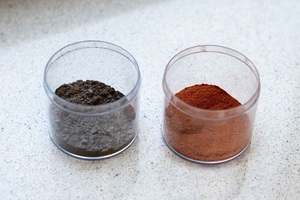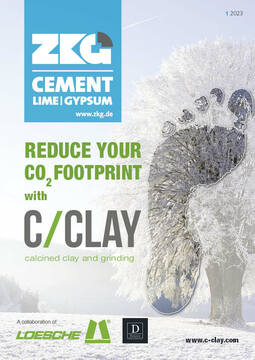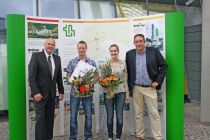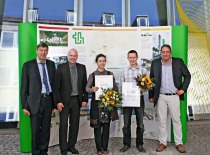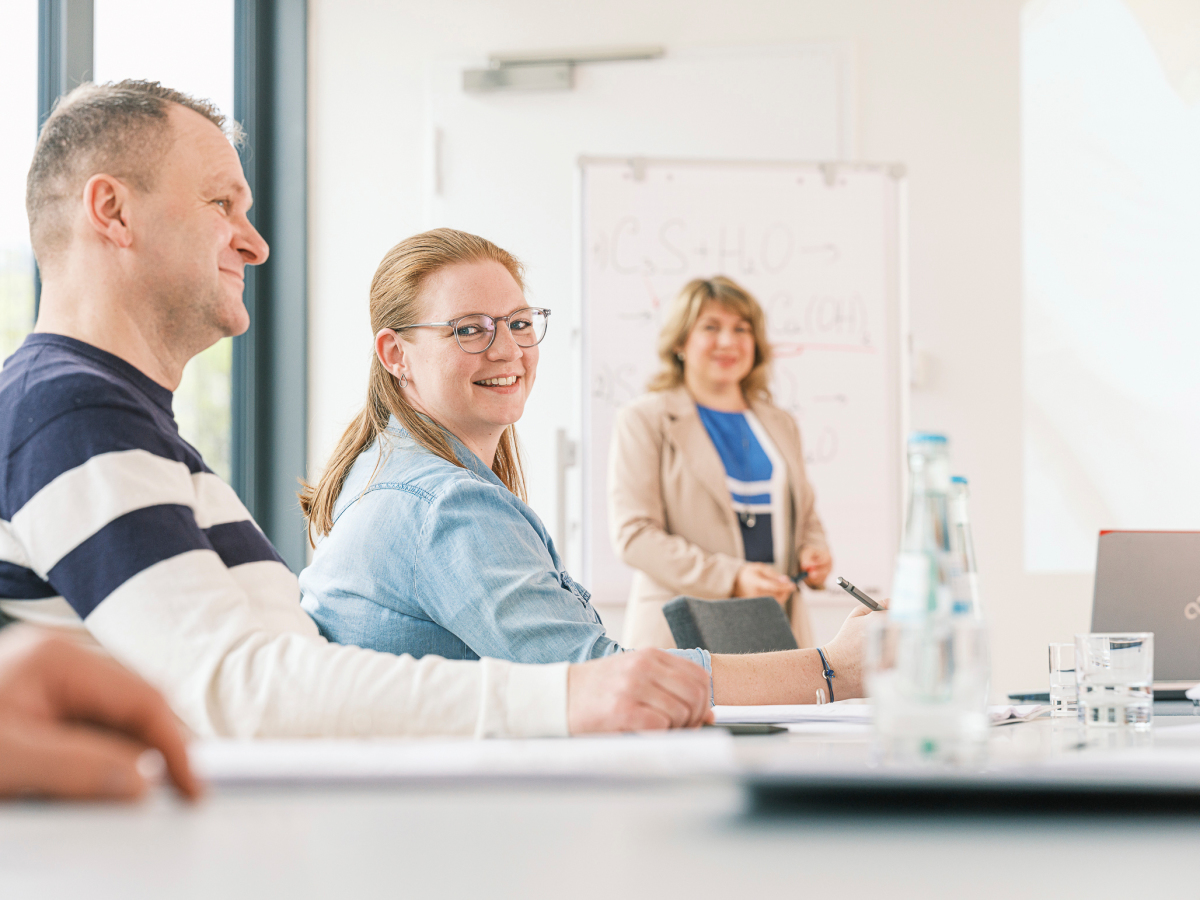Environmentally friendly cement – university prize for bachelor’s thesis in the Department of Chemical Engineering
Just one percent of all graduates of a year receive it: the university award. Every year, the Executive Board, together with the Society of Friends of Münster University of Applied Sciences (Gesellschaft der Freunde der FH Münster e. V., gdf), selects the best theses based on proposals from the departments. Carlos E. Jácome Rincón from the Department of Chemical Engineering is one of the winners of the University Award for the best theses of 2021. He receives the prize for his bachelor thesis “Chemical reduction of hematite contained in calcined clays in a fluidized bed reactor: investigation of color properties with regard to cement production”.
About seven percent of global anthropogenic CO2 emissions are attributable to the cement industry. As the world‘s population grows, experts predict that cement production will increase by about five billion tons per year by 2050. For the cement industry, this means finding innovative and sustainable solutions to keep the environmental impact as low as possible. Carlos E. Jácome Rincón, a student at the Department of Chemical Engineering at FH Münster University of Applied Sciences, addressed this issue in his bachelor’s thesis and received the university’s “Excellent” award for it.
His approach: to develop cement aggregates that, due to their chemical composition, emit less CO2 during the cement production process than before. “The most important aggregates include calcined clays, for example,” explains the 24-year-old. “To reduce emissions, manufacturers treat clays, or minerals, with high heat. However, these so-called calcined clays discolor the cement reddish because of the iron oxides they contain – so it would be unsaleable.”
In his bachelor’s thesis, Jácome worked with a company to develop a way of suppressing the discoloration so that the promising approach of a more sustainable cement could be pursued without sacrificing optical quality. To do this, the student used the combination of chemistry and process engineering he had learned in his chemical engineering studies.
“The main cause of discoloration is iron(III) ions. In a fluid-solid reactor that generates high temperature, we reduced them to iron(II) using gaseous reducing agents,” Jácome said. “Or simply put, the interaction of the reducing agent, in this case propane, and high temperatures lead to the desired color, which is concrete gray.” The relationship between the reducing agent and the temperature is crucial to the final color.
A native of Colombia, he came to Germany in 2017 and chose Münster University of Applied Sciences because of the university’s very good CHE ranking. He became enthusiastic about chemistry at an early age: “Even as a teenager, it was clear to me that I wanted to study chemical engineering.”
He now works as a research assistant on several projects: “I love working in research. It excites me to try things out and see the consequences – to make the uncertain certain.”
The supervisor of the thesis, Prof. Dr. Thomas Jüstel, says: “Mr. Jácome has managed the challenge of solving a very important problem in the field of building materials with fundamental physicochemical considerations as well as skillful investigations in the interest of the company. Therefore, we are pleased that Carlos Jácome has also joined the master’s program with us at the department!”


